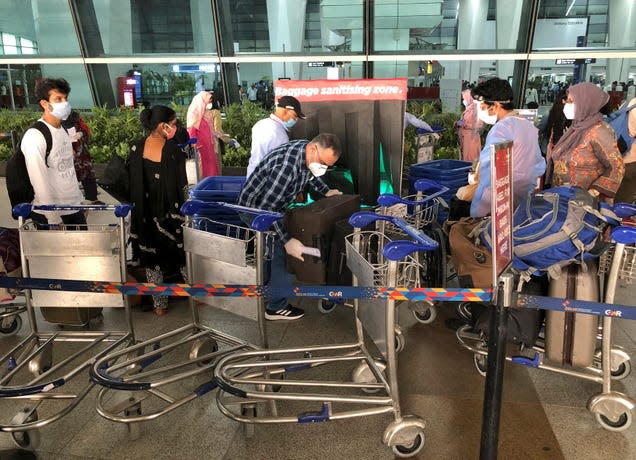Why is Delhi’s airport so crowded?

Over the past few weeks, flyers have called Delhi’s Indira Gandhi International Airport (IGIA) a “fish market,” a “bus stop,” and “a sham,” among other things.
Early morning at a Delhi fish market! At least a dozen scuffles have broken out in the last 20 mins. #DelhiAirport pic.twitter.com/tU6Oi3rBhx
— Nikhil Inamdar (@Nik_Inamdar) December 13, 2022
Their contempt may be justified.
Read more
Unending queues have been a common sight at not only the check-in and security counters of the airport but even its entrance gate. The disorder and confusion have led to many missing their flights and, often, flaring tempers.
The gravity of the situation has forced airlines like IndiGo to issue advisories asking passengers to reach the airport up to 3.5 hours ahead of their flights. Airport authorities have been putting out updates on passenger movement, but that hasn’t helped much.
Even reaching or leaving IGIA has become a task for many.
It has taken 45 minutes to get from DEL T3 parking to the right turn under the highway to get onto NH-48 towards Gurgaon. And we have been stuck at this spot here for at least 15 minutes at 12.39am. pic.twitter.com/3eNzCg6Yum
— Sanjiv Kapoor (@TheSanjivKapoor) December 15, 2022
Passengers’ complaints about mismanagement and inefficiency at the facility eventually forced the government to sit up and take notice.
India’s civil aviation minister Jyotiraditya Scindia, tagged by many angry flyers on Twitter, made a surprise visit to IGIA on Dec. 12 to take stock of the situation. Last week, a parliamentary panel summoned the CEO of Delhi International Airport to check if IGIA, which comes under its management, had failed to meet “service quality requirements.”
In any case, this isn’t only Delhi’s problem. Airports in Mumbai and Bengaluru, too, seem to be overwhelmed.
India’s airports failed to prepare for the surge
Delhi’s T3 has witnessed a huge surge in flyers so far this month, with the highest recorded on Dec. 11 when 427,000 passengers walked in.
On average, IGIA’s three terminal buildings together hosted 195,000 domestic and international passengers every single day on Dec. 1-7, The Hindu reported. This is three times the average daily flow of December 2019, the newspaper said.
Similar increases in passenger traffic have been witnessed at other major Indian airports, too. This is mostly due to year-end travel, especially after the pandemic-triggered slowdown in 2020 and 2021, observers said.
Evidently, authorities were unprepared, not just with infrastructure but also enough trained personnel.
Both the technology and personnel need an upgrade
While a robust recovery in passenger traffic is good news for the aviation industry and the overall economy, congestion at airports can dent this recovery, according to Amitabh Khosla, the International Air Transport Association’s (IATA) India director.
There is a “need to ensure that the current infrastructure (check-in counters, immigration counters, security lanes) is fully manned and utilized,” Khosla told Quartz. “Immigration and security processes need to be reviewed...Technology should also be used to improve processing times and throughput.”
India’s home ministry is planning to deploy an additional 1,200 personnel from the Central Industrial Security Force (CISF) at Delhi airport. “As of now, there’s already an estimated 5,000 CISF personnel deployed,” NDTV reported.
Earlier this month, minister Scindia held a key meeting to draw out a plan to de-clog India’s airports.
The following initiatives were outlined-
1. Plans for peak-hour capacity-based on passenger processing capacity at each major airport
2. Landing cards to be distributed on board & filled up prior to arrival, so as to minimise queues at immigration counters.
2/3— Jyotiraditya M. Scindia (@JM_Scindia) December 7, 2022
In a Linkedin post made last week, he said “load factors have touched 95% +” at India’s airports, and that steps were being taken to handle the pressure.
“In the last 24-36 hours, all agencies have swung into action to mitigate congestion at every checkpoint at all major airports. Congestion at entry points and check-in counters at T3 has eased,” Scindia wrote. “These steps will be emulated at the Bengaluru and Mumbai airports as well.”
More from Quartz
Sign up for Quartz's Newsletter. For the latest news, Facebook, Twitter and Instagram.

